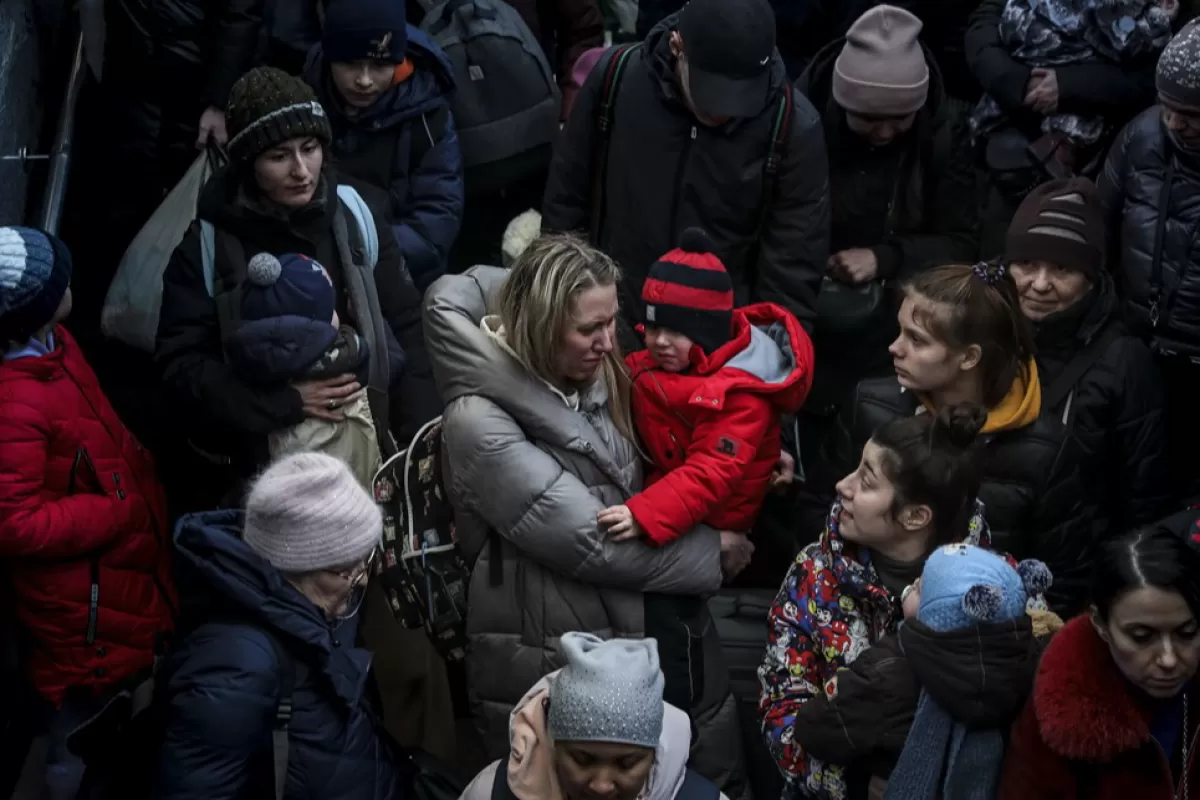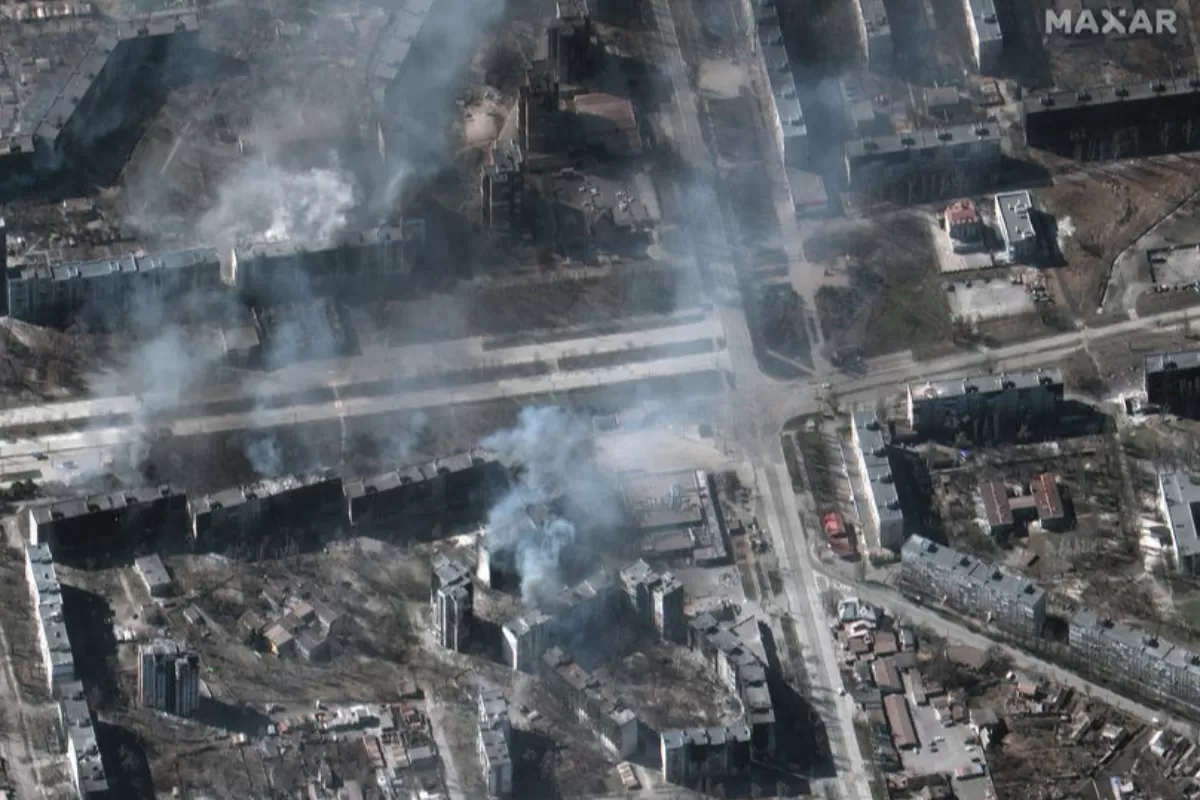
Networks of Facebook accounts, followed by millions of Romanians, simultaneously promote messages containing sovereignist and anti-EU themes. The messages are also featured on “apolitical” pages publishing mundane or religious content. Networks that promote the same messages were identified in a comprehensive online study.

A fake account attributed to Julian Assange expresses its admiration for Călin Georgescu. The fake didn't bother the Romanian extremist, who instead set about debunking made-up fakes.

(Pro-Russian) candidates in the presidential election in the Republic of Moldova campaign by spreading panicky messages, arguing, among other things, that the Romanian army will cross the Prut River or that Moldova will go to war.

Russian propaganda, alongside politicians, publicists and clerics from the Republic of Moldova, has been promoting for years narratives regarding the threats to the identity and even the existence of Moldova and Moldovans.

Realitatea TV, RTV and journalists known for spreading false narratives have presented and AI-generated story as a media investigation, claiming Ukraine is funded with capital raised from selling “Putin” teddy-bears.

Why the year 2024 is a test for liberal democracies around the world and disinformation might be fatal to them.

"The Romanian language will replace the Russian language in Ukraine" writes the Russian press, basing its false claim on a Veridica article about a debate regarding the celebration of the Romanian language.

Extreme weather phenomena and disinformation are considered by experts to be among the greatest risks facing humanity in the medium and short term. There are also concerns about the risk of societal polarization and cyber security, according to the report on global risks drawn up by the World Economic Forum in Davos (WEF).

In 2023, Moscow used fake narratives to justify its aggression in Ukraine. In addition, NATO, the EU and the United States continued to be Russian propaganda targets.

The narratives were launched / amplified by Moscow and pro-Russians, and the theses included Moldova’s involvement in the war in Ukraine, an attack on Transnistria and EU rapprochement.

The colonization of Romania, the war in Ukraine, conspiracy theories related to the "sanitary dictatorship" and climate change have been the favorite topics for most of the year’s false narratives.

The (Pro)Russians claim that Ukraine will cause a nuclear incident. The narrative is meant to undermine support for Kiev and has been promoted in Eastern Europe as well.

The war in Ukraine, sovereigntist rhetoric and conspiracy theories regarding the so-called sanitary dictatorship were the topics of scores of disinformation narratives and fake news published in Romania in 2022. They were promoted by/on various media outlets (România liberă, Național, Activenews, GoldFM, gândește.org etc.) as well as on social media by controversial figures such as Sorin Roșca Stănescu, Cosmin Gușă, Diana Șoșoacă and Adrian Severin.

The war launched by Russia in Ukraine also led to an intensification of the use of propaganda materials, fake news and disinformation targeting the Republic of Moldova. The goal was to discredit the West and undermine the values it promotes, but also to blame the pro-European government for the economic and social issues initially triggered by the Covid pandemic, then by the war.

Classical disinformation themes and fake news were increasingly replaced with war propaganda as an instrument of publicizing Moscow’s false narratives. The purpose of these narratives, irrespective of how they were presented to audiences, was to manipulate public opinion, to legitimize Russia’s actions, to conceal war crimes and atrocities committed in Ukrainian settlements, to shatter the Ukrainians’ morale and fighting spirit, as well as to spread a controlled form of chaos in the proximity of ex-Soviet space.

Russia’s war in Ukraine has displaced a huge number of Ukrainian refugees. Millions of people fled Ukraine, heading to other European countries, although many chose to relocate to some of the country’s safer areas. Russia has been trying to turn this crisis to its advantage. In EU countries, it has been promoting false narratives designed to generate public hostility towards Ukrainian refugees. In the case of Ukrainians relocated at national level, Russian propaganda sought to focus on fueling public unrest and internal tensions.

The Internet caught fire last week with the fake news that the world's billionaires, led by Elon Musk, would celebrate Halloween in Romania. From the joy of the traders along the entire Rucăr - Bran corridor, to the currency dealers’ hope for some lucrative combinations and culminating in the raging of a delicate senator filled with authentic, countryside orthodox sentiments, we all had our own expectations from, reactions to and opinions about the (pseudo)event.

Alex Jones, one of the best known American conspiracy theorists, was sentenced to pay nearly 1 billion USD after claiming for years the Sandy Hook Elementary School shooting never actually took place and was actually staged. The sentence represents a landmark for combating the increasingly toxic phenomenon of fake news. The battle might have been won, but the war wages on.

The United States wants a nuclear disaster to happen at the Zaporizhzhia NPP in order to wipe out any evidence of their biological weapons labs, reads a false narrative disseminated by the Russian government media. In fact, no Western state wants to see a nuclear incident, all the more so as it might have a powerful global impact, whereas the laboratories manufacturing biological weapons in Ukraine are a fabrication of Russian propaganda.

The Ukrainian region of Zaporizhzhia has established international contacts with at least 15 states, including EU members, writes the Russian state press, citing a separatist leader from Ukraine. In reality, EU states do not recognize Russia's occupation bodies in Ukraine as legitimate bodies of power, and personal sanctions have been introduced against Russian collaborators in Zaporizhzhia.

Ukrainian neo-Nazis are keeping civilians hostage in various locations across the Kharkiv oblast, the Russian state media writes. In fact, the locations in question have long been occupied by Russia, and the local council claims the Russian soldiers are committing war crimes.

Russia claims Ukraine bombed targets on its territory. The lack of any strategic importance of these targets, as well as the similarities with disinformation narratives launched in the past by Russian propaganda, suggest however that Moscow is looking for new excuses to intensify its bombings in Ukraine.

Despite the fact that during the last eight years the Russian propaganda has targeted mainly Ukraine, Kremlin did not forget the Baltic States and Latvia. On the one hand Latvia itself was targeted, on the other propaganda and disinformation about Ukraine and NATO were promoted as well.

Viruses synthesized to target certain populations and areas transported by birds instead of missiles, an army of Satanists fighting on the side of Ukrainian forces and “delicate” bombings carried out by the Russian army – these are some of the weirdest narratives launched by Russian propaganda after the invasion of Ukraine.

The mines Ukraine has planted in the Black Sea could set off the hydrogen sulfide deposits in the sea and thus cause a cataclysm in Europe. The false narrative was promoted in Romania by Sorin Roșca Stănescu on Cozmin Gușă’s radio show. Both have previously fostered disinformation and fake news and have aligned themselves to Russia’s positions.

Mariupol has been destroyed by Ukrainian (nationalist) forces in the city, desperate for not getting any reinforcements from Kyiv, the Russian government media writes. The narrative is meant to draw attention away from the fact that the Russian army shelled the city systematically, without caring about killing civilians or causing damage.

The Russian media writes Kyiv alone is to blame for the prolonged conflict in Ukraine. The narrative is used alongside older propaganda messages, according to which Moscow is carrying out a special military operation aimed at protecting civilians, whom Kyiv is using as human shields.

A concentration camp was discovered in the region of Luhansk, where Russian speaking people were tortured, according to a false narrative disseminated by the Russian state media. It presents Russia as a state that, through its “special military operation” in Donbass, freed the local population and chased away “the Nazis” and “the nationalists”.

Among those, the obsession for imaginary “Nazis”, labeling anyone opposing Kremlin policy “traitors”, and criticism against the so-called LGBTQ “ideology”

Ukraine is responding to the Russian propaganda by launching its own narratives, aimed at encouraging the population and demoralizing the enemy. So far, Kyiv and Ukrainians – since journalists and regular citizens are also pulling their weight – seem to be winning the information war.

The Ukrainian army has shot down a fighter jet and a helicopter of the Romanian Armed Forces in Dobruja, after mistaking them for aircraft of the Russian army. This fake piece of news is promoted by publications and public figures (of whom some are associated with the far right) that over the years have been spreading disinformation, fake news and narratives promoted by Russia.

People previously promoted by Sputnik, who in the past were accused of defending the interests of Russia and/or were associated with the anti-vaxx movement, launched a number of anti-Ukrainian disinformation narratives after war broke out. Cozmin Gușă, Diana Șoșoacă and Iosefina Pascal are among those who promote these disinformation themes, ranging from false justifications for the invasion (the existence of laboratories manufacturing biological weapons), to complete denial of an actual war.